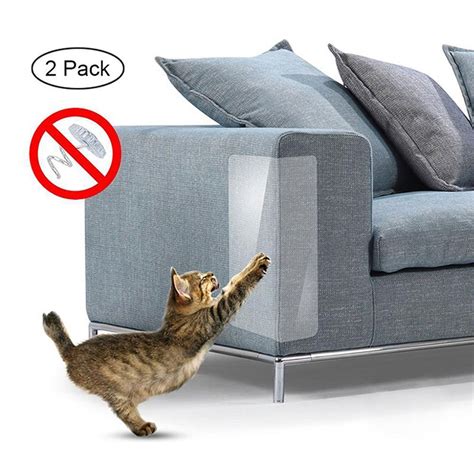How to Stop Cats From Scratching Furniture: A Definitive Guide
Cats scratching furniture is a common problem for pet owners. It's a natural feline behavior, driven by instinct, but it doesn't have to destroy your furniture. This comprehensive guide will equip you with the knowledge and strategies to deter your cat from this destructive habit and protect your cherished belongings.
Understanding Why Cats Scratch
Before we delve into solutions, understanding why cats scratch is crucial. Scratching isn't just about mischief; it serves several important purposes:
- Shedding Outer Claw Layers: Scratching helps cats remove the outer, dead sheaths from their claws, keeping them sharp and healthy.
- Scent Marking: Cats have scent glands in their paws, and scratching deposits their scent onto surfaces, marking their territory.
- Stretching and Exercise: Scratching provides a valuable form of physical exercise and helps stretch their muscles.
- Stress Relief: Scratching can be a stress-relieving behavior for cats.
Ignoring the underlying reasons won't solve the problem; you need to address them directly.
Effective Strategies to Deter Scratching
Here's a breakdown of effective methods, ranging from providing alternatives to employing deterrents:
1. Provide Attractive Alternatives
The most humane and effective approach is to offer your cat appealing scratching posts and surfaces. Consider these factors:
- Material: Cats prefer different textures. Experiment with sisal, carpet, cardboard, or even wood.
- Height: Cats enjoy stretching vertically. Offer scratching posts of varying heights, including tall ones that allow them to fully extend.
- Placement: Strategically place scratching posts near their favorite napping spots or areas where they frequently scratch your furniture.
- Stability: Ensure the post is sturdy and won't topple over when your cat uses it.
Pro Tip: Sprinkle catnip on the scratching post to entice your cat.
2. Make Furniture Unattractive
While providing alternatives is key, you can also make your furniture less appealing for scratching:
- Covering: Use covers or slipcovers to protect your furniture.
- Double-Sided Tape: Cats dislike sticky surfaces. Apply double-sided tape to furniture edges or areas they frequently scratch.
- Citrus Scents: Cats generally dislike citrus scents. Place orange or lemon peels near furniture. (Note: Avoid commercial sprays containing harmful chemicals.)
3. Positive Reinforcement
Reward your cat when they use their scratching post. Positive reinforcement is far more effective than punishment:
- Treats: Offer tasty treats immediately after your cat scratches the post.
- Praise: Verbal praise and affection can also be highly rewarding.
4. Trim Your Cat's Claws Regularly
Regularly trimming your cat's claws will minimize the damage they can inflict on your furniture, even if they still scratch. Consult your veterinarian or a groomer if you're unsure how to trim your cat's claws safely.
5. Address Underlying Stress
If your cat is scratching excessively, it might be a sign of stress or anxiety. Consider these factors:
- Environmental Changes: Recent moves, new pets, or changes in routine can cause stress.
- Medical Issues: Underlying medical conditions can also contribute to behavioral changes. Consult your veterinarian if you suspect a medical problem.
Maintaining a Scratch-Free Home: Ongoing Strategies
Successfully deterring scratching requires consistent effort. Regularly inspect scratching posts, replace worn ones, and continue to reward your cat for using them appropriately. Remember, patience and consistency are key to achieving a peaceful co-existence with your feline companion. By understanding your cat's needs and employing these strategies, you can safeguard your furniture and maintain a harmonious home environment.
